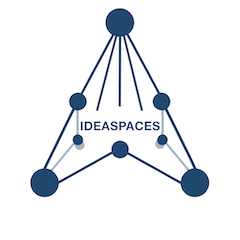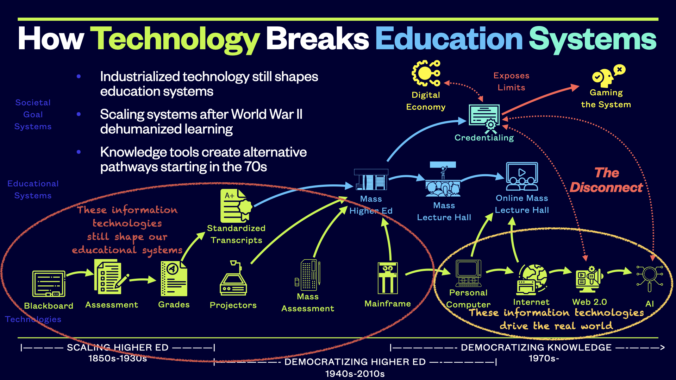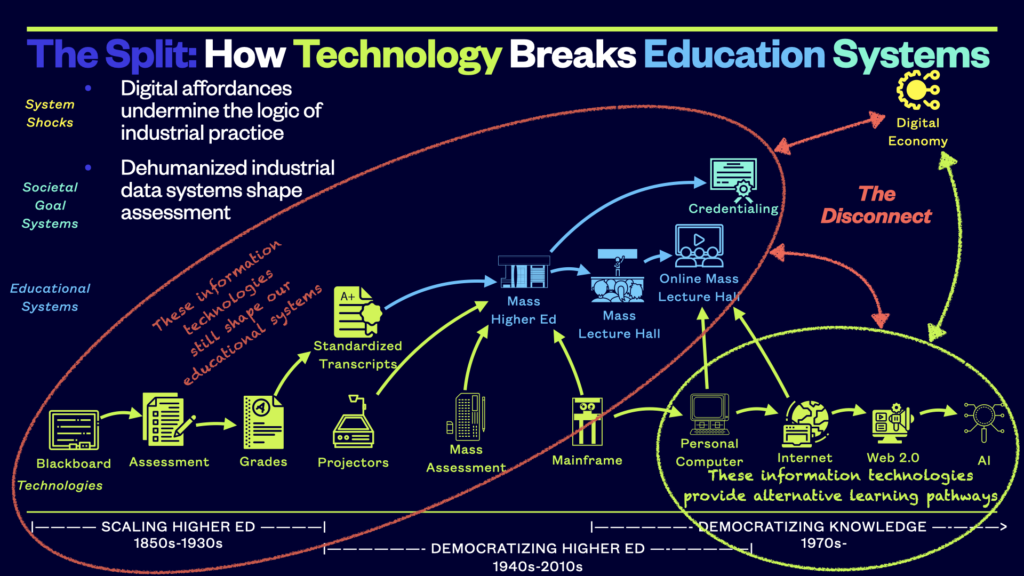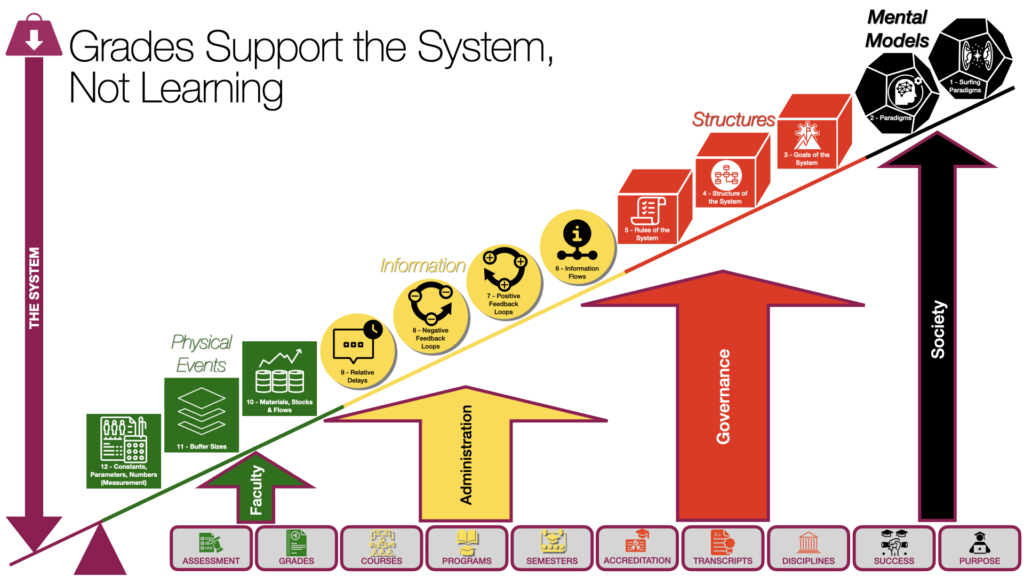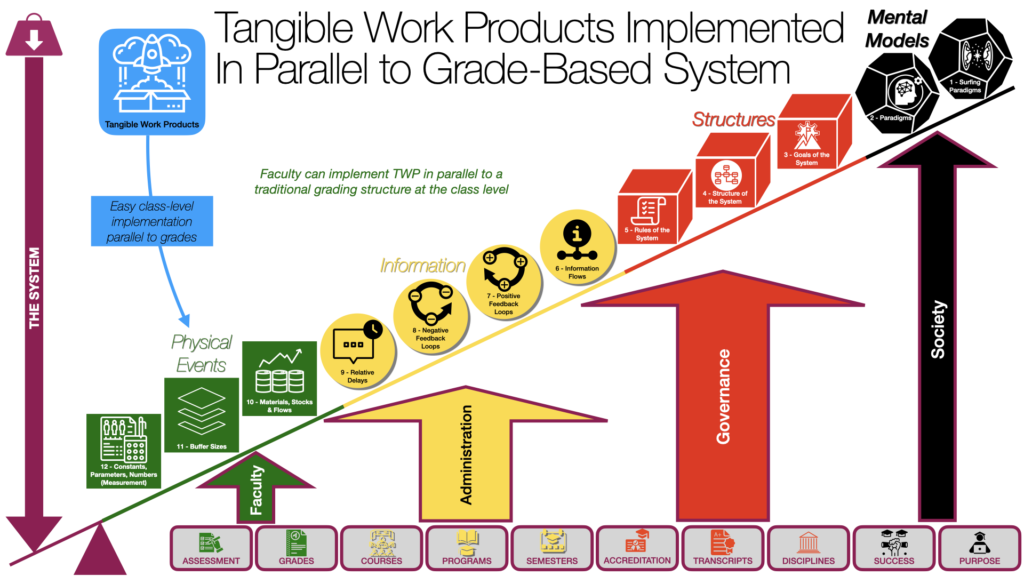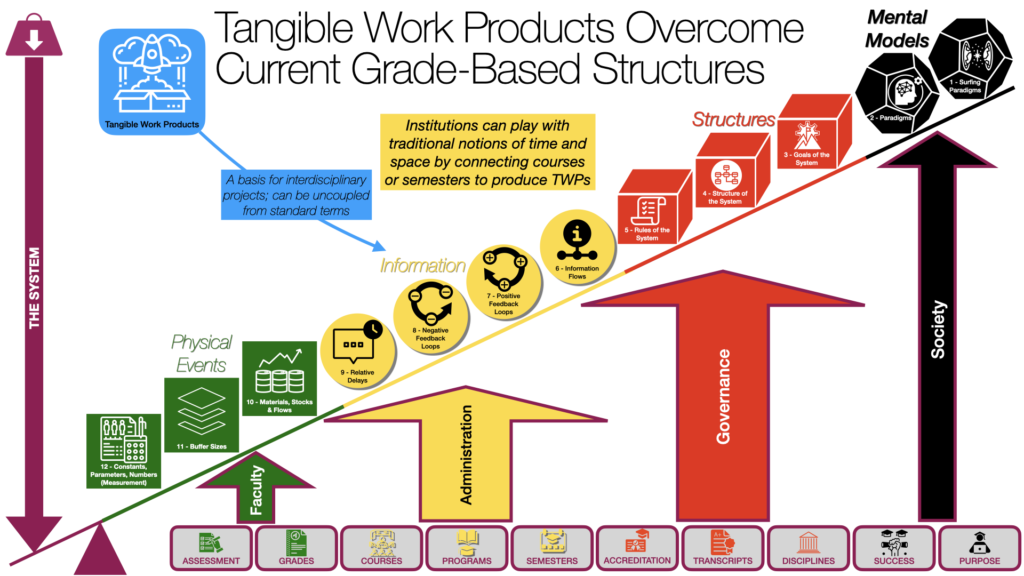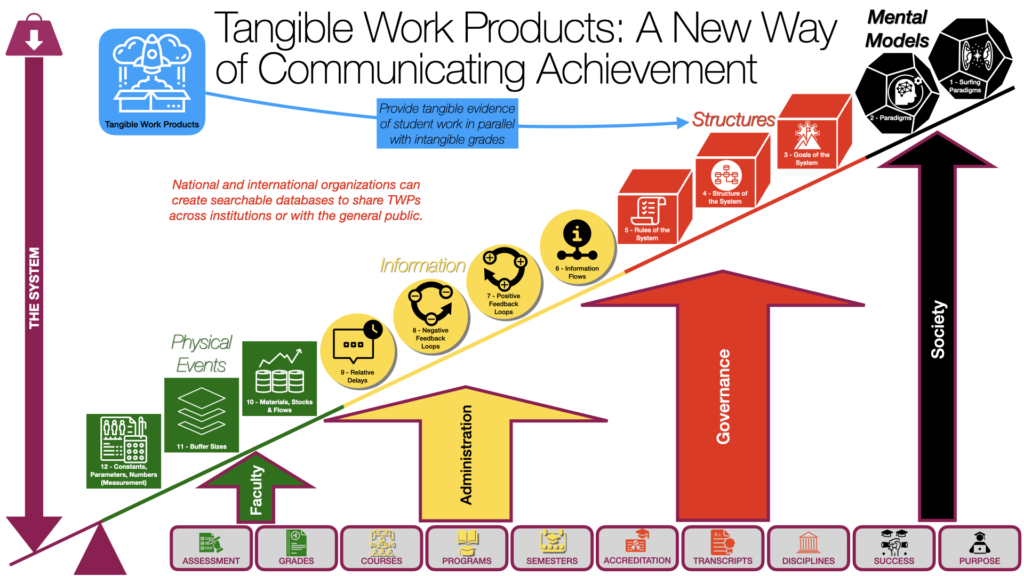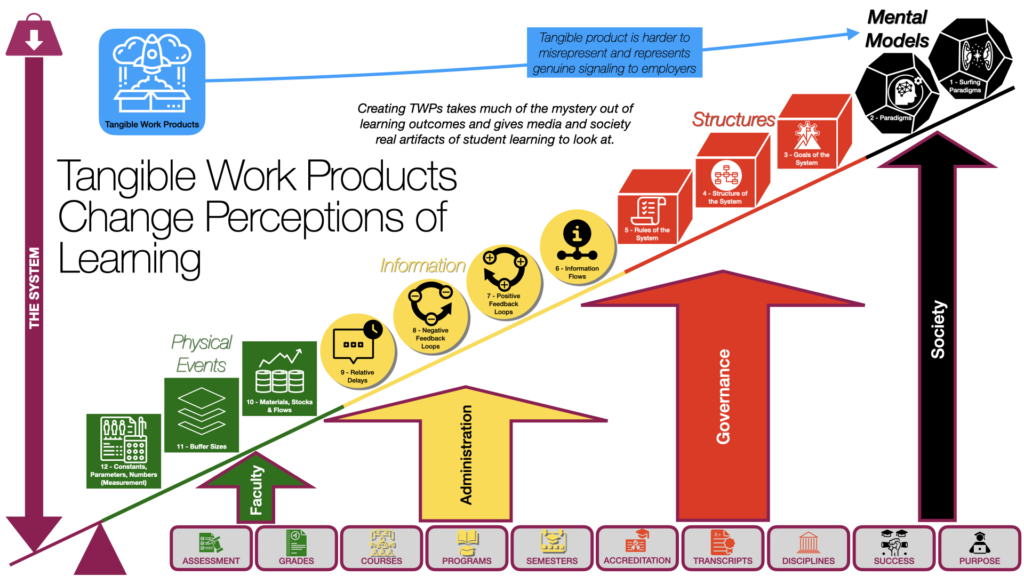In May 2023, I was asked to deliver a talk on how AI impacted assessment. While researching for this presentation, I reviewed some of my earlier work on Transactional Teaching. I then linked it back to the development of systems.
This exercise yielded some interesting thoughts about organizing a wide range of known issues in educational practice with system development and change. In short, they all connect back to grading and assessment, but there may be an interesting approach that could gradually transform the entire system.
Here is a version of the talk in its on YouTube.
The core of the talk is that our “modern” educational systems developed over time through interactions between social pressures (the Industrial Revolution, World War II, and the Digital Revolution) and the development of enabling technologies dating back to the blackboard in the 19th Century. Blackboards allowed education to be scaled to meet demands for widespread elite education.
World War II exposed the limits of this system, because we achieved victory in part through massive science projects. It was difficult to find enough specialists to staff these efforts. There was pressure to expand the pool of college-educated people beyond the elite.
Technologies, such as automated assessment and computerized transcripts, had evolved to where the mass university was possible. This dehumanizing trend prioritized the production of graduates over authentic learning. Grades were adapted from the older elite system but then systematized to allow for the mass distribution of information.
This structure of mass education was fleshed out by the end of the 1960s. It was based on the ability of institutions to process limited kinds of student data (grades and transcripts) to show achievement. When accountability movements started in the 1980s, these metrics formed the core of new standards for accreditation.
The system trained students that the goal of school was grades. Standardized assessments reinforced this reliance on a proxy that measured “knowledge” through grade achievement.
These dehumanizing trends were noted by the 1970s by thinkers such as Ivan Illich, who wrote, “The pupil is thereby “schooled” to confuse teaching with learning, grade advancement with education, a diploma with competence, and fluency with the ability to say something new. His imagination is “schooled” to accept service in place of value. (Ivan Illich, Deschooling Society, 1970).
Parallel to these mounting criticisms of the educational systems constructed after World War II, technologies that democratized processes formerly monopolized by educational systems emerged.
The personal computer became widespread in the 1980s (and there is a direct through line between the PC and the universe of personal devices we still use today). The mass Internet emerged starting in the 1990s. Web 2.0 technologies democratized creativity and sharing starting in the 2000s. AI is just the latest example of these technologies.
Combined, these technologies showed alternatives to sitting in classrooms for hours, taking meaningless assessments, and going through the motions of “getting educated.” The intangibles that the educational experience delivers are much harder to demonstrate. They get lost in the noise of grading and certification, the theater of education.
This leads to what I call “The Disconnect” where educational systems become more and more disconnected from the digital worlds of the present and future. More students are opting out of the system and enrollments have declined by over 4 million in the last decade for “optional” education, as students and parents explore alternatives.
Systems do not change overnight. Our existing, grade-based system developed over the course of almost a century, starting in the late 19th century.
Donella Meadows provides us with a simple model for deconstructing systems, which we she calls “Leverage Points.” While not a perfect model, it serves as a useful way of illustrating how different activities within the system support layers of systemic structure.
These system support structures grow from our models of grading and assessment. Mass assessment requires grading. Grading leads to courses, programs, and semesters. Programs lead to accreditation, transcripts, and disciplines.
All these elements combine to define what “success” in the system looks like and what the purposes of higher education (“to get a degree”) are. These elements grow from administrative convenience. Many of them are antithetical to humanized learning.
After giving this presentation, it occurred to me I had hit upon a systemic counterweight that is now much more logistically possible because of the very democratized knowledge systems that threaten existing systemic structures today.
Instead of measuring achievement through an arbitrary proxy of grades, have learners show what they have learned through the production of tangible work products. I already do this in my own classes and detail the process in Learn at Your Own Risk.
Tangible work products can be implemented by faculty members on a class-by-class basis in parallel to existing grading systems. I already do this. The more faculty members that do this, the more accepted it will become as standard practice by institutions and students alike.
Besides encouraging faculty members to adopt Tangible Work Products, institutions can explore how larger projects can span courses, disciplines, and semesters to create a more flexible and authentic achievement indicator. These can demonstrate competencies to accreditation and oversight entities as well.
New databases augmented by AI are possible that would allow creating public systems to share student work in a much deeper way than the current transcript system allows for. I wrote about this idea several years ago in an article called “Thinking Backward: A Knowledge Network for the 21st Century” but there are a number initiatives exploring this idea..
Over time, these systems would supplant existing information exchange systems between students, institutions, among institutions, and employers, as they would provide a much richer picture of what graduates can do.
Finally, Tangible Work Products would be a concrete demonstration of student work and would shape the narratives around the efficacy and bias of educational institutions to create new bases for the social contract between education and the population.
